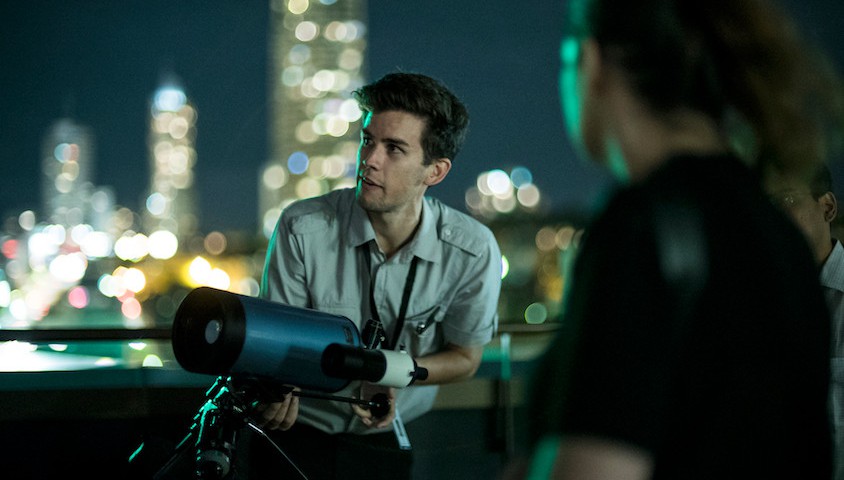Where do we come from?
It’s a simple question with many possibilities. Are we designed by a higher being, or have we arrived from another planet? Did we come from submarine origins, or were we generated from electrical sparks?
Humans explore the world to answer these questions, while some of us look up towards the universe for answers, exploring terrestrial space to uncover where we come from and our place in the scheme of existence. Gathered on the Australian Museum rooftop with astronomer Fred Watson from the Australian Observatory, we talked about the stars, planets, and the unsung astronomical trailblazers that looked up to uncover what we now know about the largely unknown universe. Trailblazers such as Tycho Brahe challenged what was previously taught and discovered that comets travelled above the atmosphere and beyond our moon. Brahe went on to build the Uraniborg research institute, and an observatory in the Czech Republic where he spent the rest of his life reporting his findings, leaving his legacy for the next astronomers. Watson also discussed Thomas Digges who started the wave of the popularization of science as the first to illustrate the English version of the Copernican system. Digges was the first to propose that the universe is infinite, and contradicted the view that the universe held no change among its fixed stars. Both explorers debated the belief of a limited universe finding evidence of its extent and the vastness of our own knowledge.
The night became an amalgamation of the past, present and possibilities of technology for the future of night gazing and discovery. We peered through telescopes aimed towards Orion’s Belt, Jupiter and the Moon, and held an iPad and phone screen to the sky for an automatic 360 degree view of the constellations. Phone apps such as Sky Map, Sky Walk, and SkySafari turned mobile phones into hand-held planetariums to identify stars, planets, constellations and nebulaes, while iPad apps such as Star Walk™ used images from the European Southern Observatory for a 360-degree view identifying over 20,000 planets, stars, satellites, constellations and galaxies. From a period where astronomical discovery was recorded with the naked eye, to the invention of the telescope, we are now at a time where we can view discoveries at the flick of a wrist from the mobiles phones we keep in our pockets. If we can do this now, imagine the possibilities of technological advancement for space exploration?
Advancement for discovery is endless, but it is the trailblazers that utilise this for their quest of inquisition. Great astronomers don’t just sit in observatories and record what they see beyond what we know. They instigate discussion and hold evening talks to share their experience, excitement for exploration, and inquire about what else? What can the universe add to our understanding of ourselves? They incite the inspiration in the next generation and build the next wave of believers and astronomical achievers who will push our knowledge and understanding further still. They remind us that research and discovery are endless unless we cease to explore or curb our curiosity. Discovery is a never ending quest which fortunately, we as humans are always searching – always looking up.
The Trailblazers event will be open until 18 July 2016, with the Trailblazers Talks running until 14 July 2016.



